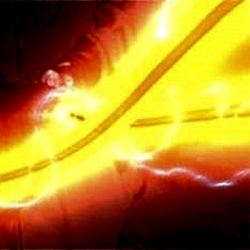
Don’t Cross The Streams
I learned this lesson the hard way a few weeks ago. It turns out that if you wire the system up properly, with all the primary ports going to one switch and the secondary ports to another, but have one device set up as a switched device, you essentially build a bridge between the two networks.
And that’s bad. While you don’t have total protonic reversal, you do get what is called a broadcast storm, and the switches freak out. The only way to fix it is to separate the networks and power cycle everything on the network.
Dante devices will stop working properly, probably won’t pass audio and devices will not mount properly. Basically, it’s bad. I chased this problem for a while before my friend Jake Cody helped me figure it out. I learned an important lesson that day, and it changed the way I will set up a Dante network next time.
Why Redundant?
You might be asking, why bother with redundancy if it’s so fraught with peril to set up? Well, it’s really a safety net. When we used analog copper snakes, one wire could go bad, and we’d still have signal in the others.
In, say, a 56-channel snake, if you lost one channel, you still had 55. On a 16-channel drive snake, you could patch around a channel that went bad. Even if you lost 2-3 of them, most of the system would still function. And if you got creative, you could make it all work.
But when the entire system depends on four 24-gauge solid copper conductors, it doesn’t take much to wipe the whole system out.
If one of those wires breaks, you don’t lose 75 percent of the system; you lose it all. Or if a single switch freaks out, you can lose the whole network. And the only way to fix it is to stop audio, and reboot or reconfigure.
Building a redundant network will let you fix a problem in one leg while the other still passes audio. For any system that is mission critical—and that pretty much means all of them—you should go redundant.
Now, here’s my revised process for setting up a network that will work the first time.
Configure First
My biggest mistake was wiring everything together then powering it all up. I freaked the switches out without even knowing it, then nothing I did after that worked properly. So the new tactic is to configure first, then wire.
In some cases (like Yamaha Rio boxes), this will mean flipping dip switches for redundant mode. In others, it will mean powering it up and selecting redundant mode in the setup menu. No Cat-5 cables will be connected until each piece of gear is verified to be in redundant mode.
But it’s not time to connect anything yet. The next step is to set up the switches. It’s important to get the QoS settings correct, build VLANs, configure settings for wireless use and disable energy efficient modes. This is all best done without anything connected to the switch. In fact, the next time I do it, I’ll be programming switches in the office before heading out to the field.
